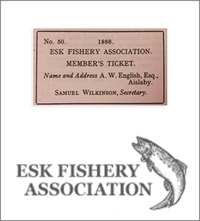


Local Sponsors
-
Horseshoe Hotel
Egton Bridge, Nr Whitby. YO21 1XE
18th Century Country Inn, six modern ensuite rooms, traditional pub serving cracking local real ale and fabulous pub grub. Open 7 days a week. Situated on the banks of the River Esk and just 8 miles from Whitby.
-
Esk Fishery Association
Members of the Esk Fishery Association have been fishing for salmon and sea trout in the River Esk, since 1864. We currently fish 8 miles of the river bank and have between 70 and 80 members. All legal methods of fishing with a rod and line are permitted, on at least some of our water. We are keen to encourage youngsters to fish and are proud of the training course we run to introduce youngsters to fishing, in partnership with the Yorkshire Esk Rivers Trust and the North Yorkshire Moors National Park. We are always interested in new members; sometimes there is a short waiting list, at other times applicants can join as soon as they have been accepted by our committee. The EFA’s website eskfisheryassociation.co.uk provides much more information, including the cost of membership.



